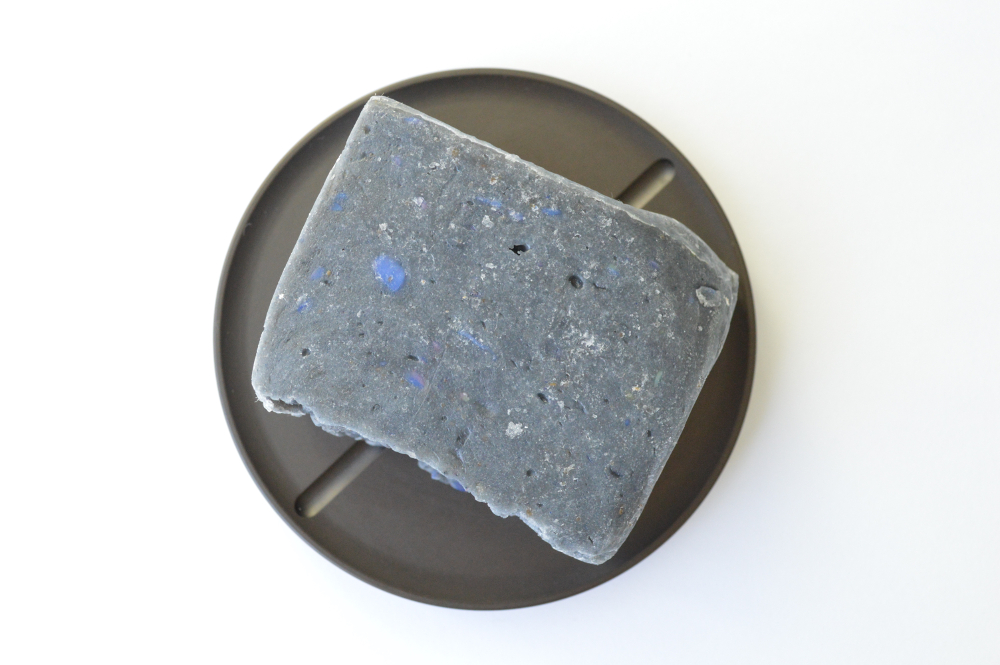Primary Ingredients
| Ingredient | Quantity | Percentage |
| Avocado Oil | 2.24 ounces | Calculating... |
| Coconut Oil (76 deg) | 16 ounces | Calculating... |
| Olive Oil | 13.76 ounces | Calculating... |
| Ingredient | Quantity |
| Distilled Water | 12.16 ounces |
| Sodium Hydroxide (NaOH) | 137.1 grams |
Show Superfat Ranges
Special Ingredients
2 tablespoons hardwood activated charcoal powder, 1 oz. Timeless Vitamin C + E Face Serum, 1.36 oz. (medium strength) passionfruit rose fragrance and flavor oil.Recipe
Combine all oils. Add the sodium lactate to the cooled lye water mixture. Add the lye water to the oils and bring to a very light trace. Stir in the charcoal powder and then add the fragrance oils. Pour the batch into a mold and let sit overnight. Cut the soap bars and let cure for 3-4 weeks. Using a cheese grader, shred the soap bars into a crock pot liner bag with a splash of water. Let the soap sit in the crock pot on low for approximately one hour, stirring occasionally. Mix in the vitamin C face serum and pour the rebatched soap into the soap mold. After the soap has hardened cut the soap into bars for use after the pool.
Batch Notes
Originally this recipe was for a sort of galaxy soap, but we didn’t work fast enough and the soap started to setup before we could get swirl it in the mold. We ended up deciding to try another idea for a recipe that required rebatching the soap with some vitamin C to make a soap that would wash off chlorine after swimming in the pool. I figured rebatching was probably the only safe way to add the vitamin C serum without the soap seizing or losing the chemical properties I was hoping for in the soap (the vitamin C should bond with the chlorine to wash it off your skin after a swimming).
After rebatching the other colorants we had added for the original recipe were overtaken by the charcoal, which actually make a cool gun metal sort of look. Later I found that simply rebatching other soaps that contained charcoal reproduced the gun metal look as well.
The passionfruit rose fragrance truly smelled delicious. At one point I even thought of tasting it, but then thought better of it. Thinking about it now I probably could have because this was also marketed as a flavor oil for lip balm.
I referenced a few different sources that led me to deciding to add the vitamin C.
Two forms of vitamin C, ascorbic acid and sodium ascorbate, will neutralize chlorine. Neither is considered a hazardous chemical. First, vitamin C does not lower the dissolved oxygen as much as sulfur-based chemicals do. Second, vitamin C is not toxic to aquatic life at the levels used for dechlorinating water.
What does it do in soap? Ascorbic acid and Sodium hydroxide (NaOH) make Sodium ascorbate in soap. Ascorbic acid and sodium ascorbate are both considered to be Vitamin C, an important dietary additive.
How much lye does it neutralize? 10 g ascorbic acid neutralizes 2.02 g NaOH. 10 g ascorbic acid neutralizes 2.83 g KOH. When using ascorbic acid in your recipe, add the appropriate extra weight of lye needed to react with the acid. If you do not add extra lye, the acid will increase the superfat in your soap.

